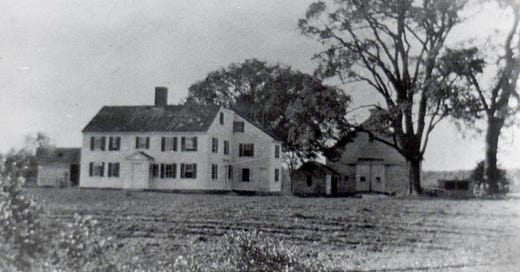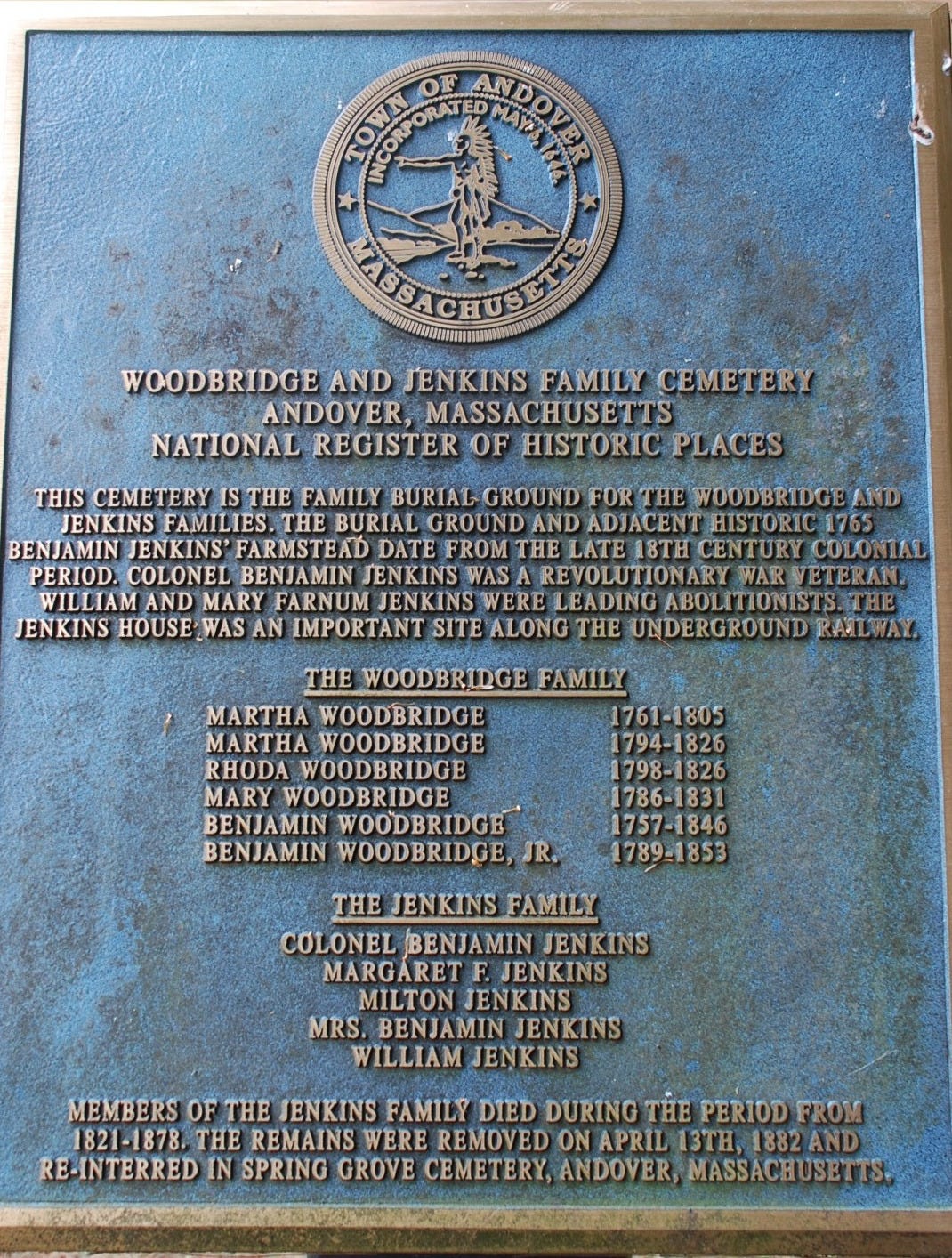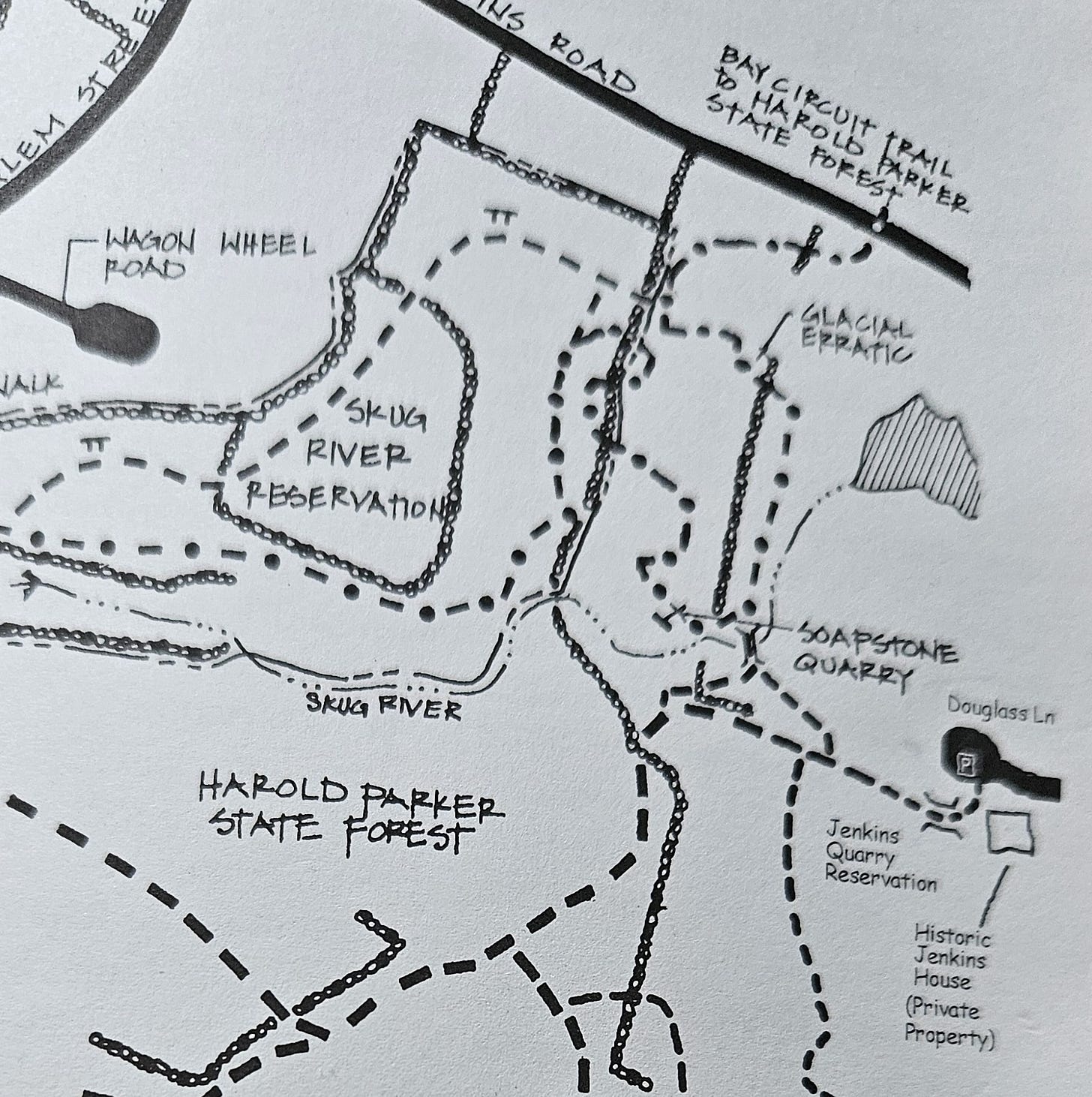Revisiting the William Jenkins Homestead
“He lived to see the fulfillment of his great desire, the abolition of slavery in America”
Hello Team History Buzz!
I hope you will excuse the long time since our last post. We had a setback a few months ago when the editor of History Buzz had an accident. The board of directors of the History Center decided to put a number of activities on hold for a while to give her time to heal. We're happy to say that our editor is back at work, and our researchers and writers are ready to post again. Thank you so much for staying with us while we were away.
We're very happy to be back with you again!
And now, on to Barbara’s story . . .
Do you recognize this home?
It’s the William Jenkins homestead, originally located at 89 Jenkins Road but now the address is 8 Douglass Road. Many articles have been written about this homestead and its rich history. But sometimes revisiting historical topics is important because history tells stories, and this homestead has many stories to tell.
The homestead was created in 1765 by Samuel Jenkins on land that was part of the 400-acre land grant to the Osgood family. Samuel’s son Benjamin built a mill on the Skug River and farmed the land. William inherited the property from his father Benjamin.
According to previous articles, William had a forceful personality and was known to speak out against slavery. His strong feelings against slavery caused him to resign as a member of the South Church because the church did not support abolition. William felt that actions speak louder than words, so he and his wife, Mary Farnham left the church and became abolitionists.
The Jenkins home was a station on the Underground Railroad from 1830-1863. Their homestead was located on the Boston-Haverhill stage road, which made it an important path for former slaves to escape to freedom in Canada. In their home there was a secret room next to the fireplace to hide the slaves and outside there was a large rock on the property hollowed underneath which helped hide fugitives. It is believed that the Jenkins Family provided a safe haven to many fugitives seeking freedom from slavery. This homestead was just one of the homes in Andover that were part of the Underground Railroad.
Because of their stance on slavery, William and his wife also invited other abolitionists to their home. Harriet Beecher Stowe, Lloyd Garrison, Frederick Douglass, and the Hutchinson Family quartet of New Hampshire were all visitors.
According to an article written by Bessie Goldsmith,
The Hutchinson Family, Judson, John, Asa, and Abby sang for freedom, for temperance, for peace, and for moral and social reform.
When William Jenkins inherited the homestead, he converted the sawmill into a mill that cut the blue soapstone that was quarried from the property. Soapstone, also called steatite, is soft and easy to work with. The stone was used for gravestones, monuments, and buildings. The soapstone was also used in Cambridge’s Mt. Auburn Cemetery and can be found in the West Parish Cemetery as well as Spring Grove Cemetery. In 1834, William Jenkins hired Addison Flint and Michael Flannelly of Reading to quarry the stone. The three men became partners in this successful business. Despite the fact the business was expensive to run it was still profitable. Well, that was until the company treasurer stole the funds!!!
After the failure of the soapstone business, the Jenkins Family started a lumber business. They specialized in ‘ship’s knees’ or right-angled construction pieces milled from an oak tree’s lower trunk and roots.
The last Jenkins Family to live here was Elizabeth “Belle” Jenkins Butterfield who had inherited the homestead from her father in 1878. Belle sold the homestead to Frank Morse in 1904.
Other owners followed, including Paul Hill who owned the property for 43 years before selling off parcels of the farm in 1947. One family purchased about 38 acres and established a mink farm on the site!
Another topic of interest on this property is the small cemetery known as the Woodbridge-Jenkins Cemetery. The Woodbridge family owned the property before the Jenkins Family. The soapstone quarry provided the gravestones for the burial plots.
William died in 1878 at age 82 but lived to see the end of slavery in America and although he was originally buried in the family cemetery his body was exhumed in 1882 and was moved to Spring Grove Cemetery. His soapstone headstone is from this farm and is engraved with these words:
“He lived to see the fulfillment of his great desire, the abolition of slavery in America”
Different groups have taken an interest in the care of this cemetery. According to the Andover Historic Preservation website (link),
A team of archaeology students from the University of Massachusetts came to the cemetery in 1998 and did a site dig to determine how many graves were originally in the cemetery.
In 2003 two Eagle Scout David Balest of Troop 79 and Scott Wilbur of Troop 73 cleaned up and restore the cemetery, erected a fence around it and placed a historic maker at the NE corner of the cemetery.
In 2014 another Eagle Scout project by Jeff Page of Troop 73 created a new foot bridge which allowed easy access to the cemetery.
An important part of this property is the Skug River. The name of the Skug River is thought to be an Abenaki name for Snake. The Skug River is 4.9 miles long and flows into Martin’s Pond in North Reading. The river provided water for the needs of the Jenkins Homestead.
The dam is long gone but some of the large stone walls can still be seen in the on the Skug River Reservation and the Jenkins Quarry Reservation. These reservations are part of AVIS (Andover Village Improvement Society) which is dedicated to land conservation.
The history of this homestead is broad. It has been a farm, a sanctuary for slaves, a soapstone business as well as a lumber business, a cranberry bog, and even a mink farm. In 1986, the television show, Spenser for Hire, came to the farm for a few weeks for filming.
It is important to note that the historic Jenkins House is on private property, people can enjoy other parts of this property by visiting the Woodbridge-Jenkins Cemetery and walking the Skug River and Jenkins Quarry Reservations.
Thank you for reading this History Buzz
Leave a comment and let me know your thoughts. We love to hear from History Buzz Readers!
~Barbara
Sources:
Andover Center for History and Culture files
Andover Preservation Website
Cairns, Jane, “History of the Jenkins Quarry” from the Town of Andover website
Date, Terry, “Andover’s Hidden Cemetery”—Andover Townsman, June 17, 2021
McClory, Scott, “The Legacy of the William Jenkins Farm”—Andover Historical Society Newsletter, Fall 2010
Noyes, Kay, “Jenkins House Station for Escaping Slaves” --Andover Townsman March 22, 1956
Ralston, Gail, “Andover’s Blue Soapstone Quarry” -- Andover Townsman January 24, 2019









We are back! Thanks. Barbra, for the article. I've been to the cemetery and have been meaning to take the trail into the reservation. Maybe in that brief time window between the end of snow cover and the onset of bugs.
Fascinating column, Barbara! I had the privilege of helping repair a bridge on the AVIS Jenkins Reservation. I was intrigued and inspired by all that must have transpired in the adjacent Jenkins home. Your post filled in a lot background. Thank you!